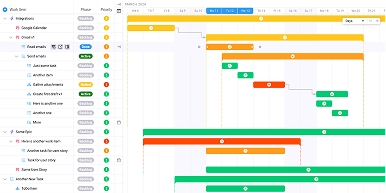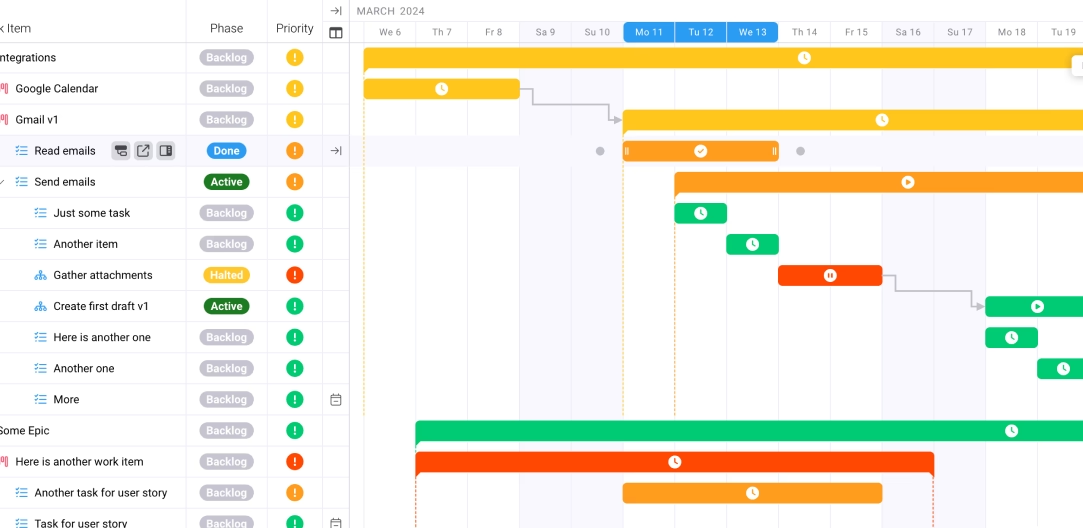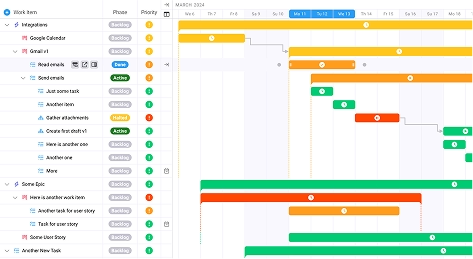
Maximizing ROI with Content Repurposing: Tips for Marketing Agency Leaders
Key takeaways:
In today’s competitive digital landscape, marketing agency leaders face mounting pressure to deliver exceptional results while managing tight budgets and demanding client expectations. Content Repurposing has emerged as a strategic solution that enables agencies to maximize their return on investment (ROI) by transforming existing content assets into multiple formats across various channels. This comprehensive guide explores how “Maximizing ROI with Content Repurposing: Tips for Marketing Agency Leaders” can revolutionize your agency’s approach to content marketing, streamline operations, and significantly boost profitability.
Understanding the Content Repurposing Landscape
Content repurposing involves taking existing content and adapting it into different formats, platforms, or contexts to extend its reach and lifespan. For marketing agencies, this strategy represents a fundamental shift from constantly creating new content to strategically leveraging existing assets. Research indicates that 54% of marketers will measure content marketing ROI within their company, highlighting the growing emphasis on measurable returns from content investments.
The modern marketing environment demands efficiency without sacrificing quality. With content marketing revenue expected to reach $107 billion by 2026, agencies must develop sophisticated strategies that maximize every piece of content they create. Content repurposing offers a pathway to achieve this goal while maintaining high standards of creativity and engagement.
The ROI Imperative for Marketing Agencies
Marketing agencies operate in an environment where demonstrating clear ROI is essential for client retention and business growth. Studies show that 72% of marketers improve their engagement through content marketing, yet many agencies struggle to quantify the direct impact of their content efforts. Content repurposing addresses this challenge by creating multiple touchpoints from a single content investment, thereby multiplying potential returns.
The financial benefits of content repurposing extend beyond immediate cost savings. When agencies can transform one piece of content into five or ten different assets, they’re essentially reducing their cost per engagement while increasing their market reach. This approach becomes particularly valuable when considering that 68% of businesses see an increase in content marketing ROI thanks to using AI, which can streamline the repurposing process.
Strategic Framework for Content Repurposing
Audit Your Existing Content Assets
The foundation of successful content repurposing begins with a comprehensive audit of your existing content library. This process involves cataloging all content assets, evaluating their performance metrics, and identifying pieces with untapped potential. High-performing blog posts, successful social media campaigns, and engaging video content often serve as excellent candidates for repurposing.
During the audit phase, agencies should utilize robust project management systems to organize and track their content inventory. This systematic approach ensures that valuable content doesn’t get overlooked and provides a clear roadmap for repurposing opportunities.
Identify Your Content Pillars
Successful content repurposing requires a strategic approach centered around core content pillars that align with your agency’s expertise and client needs. These pillars should reflect your agency’s thought leadership areas and provide consistent value to your target audience. For instance, if your agency specializes in digital marketing for healthcare clients, your content pillars might include healthcare compliance, patient engagement strategies, and medical marketing trends.
Top marketing agency leadership trends every CEO should know in 2025 emphasize the importance of strategic content planning. By establishing clear content pillars, agencies can ensure their repurposing efforts maintain consistency and relevance across all channels.
Multi-Channel Repurposing Strategies
From Long-Form to Bite-Sized Content
One of the most effective repurposing strategies involves breaking down comprehensive content pieces into smaller, more digestible formats. A detailed whitepaper can be transformed into a series of blog posts, social media infographics, podcast episodes, and email newsletter segments. This approach maximizes the value of substantial research and content development investments.
The process requires careful consideration of each channel’s unique requirements and audience preferences. For example, LinkedIn articles might focus on industry insights and professional development, while Instagram posts could highlight key statistics or visual representations of the same data.
Video Content Multiplication
Video content offers exceptional repurposing opportunities due to its versatility and high engagement rates. A single webinar recording can be transformed into multiple assets: short promotional clips for social media, audio-only podcast episodes, blog post transcripts, and educational slide presentations. Research shows that visual content formats, including videos, were among the highest ROI formats in 2024.
The key to successful video repurposing lies in understanding platform-specific requirements and audience behaviors. Short-form vertical videos dominate platforms like TikTok and Instagram Reels, while longer-form content performs better on YouTube and LinkedIn.
Cross-Platform Content Adaptation
Different platforms require different content approaches, but the core message can remain consistent. A comprehensive case study can be adapted into various formats: a detailed LinkedIn article for professional audiences, a visual infographic for Pinterest, a series of Twitter threads for real-time engagement, and a podcast episode for audio-focused audiences.
This multi-platform approach ensures maximum reach while respecting each platform’s unique characteristics and user expectations. Agencies must develop templates and processes that streamline this adaptation process without compromising content quality.
Technology Tools for Efficient Repurposing
Content Management Systems
Effective content repurposing requires sophisticated content management systems that can handle multiple formats, versions, and distribution channels. Modern platforms should integrate with social media schedulers, email marketing tools, and analytics platforms to provide comprehensive content lifecycle management.
Agencies should invest in systems that support collaborative workflows, version control, and automated publishing schedules. This infrastructure becomes particularly important when managing content repurposing campaigns across multiple clients and industries.
AI-Powered Content Tools
Artificial intelligence has revolutionized content repurposing by automating many time-consuming tasks. AI tools can generate social media captions from blog posts, create video transcripts, extract key quotes for graphics, and even suggest optimal posting times based on audience engagement patterns.
The integration of AI-driven marketing strategies is transforming agencies in 2025, with many agencies reporting significant efficiency gains and improved content performance. Research shows that 44% of marketers have adopted AI for content production. However, human oversight remains essential to ensure brand consistency and quality control.
Analytics and Performance Tracking
Measuring the success of content repurposing efforts requires sophisticated analytics that can track performance across multiple channels and formats. Agencies need systems that can attribute engagement, conversions, and ROI to specific content pieces and their various repurposed versions.
Effective time tracking systems also help agencies understand the time investment required for different repurposing activities, enabling more accurate project pricing and resource allocation.
Building Scalable Repurposing Workflows
Team Structure and Responsibilities
Successful content repurposing requires clear team structures and defined responsibilities. Agencies should designate content strategists who can identify repurposing opportunities, creative professionals who can adapt content for different formats, and project managers who can coordinate workflow across multiple channels and deadlines.
The team structure should also include quality assurance roles to ensure that repurposed content maintains brand consistency and meets platform-specific requirements. Project management is essential for modern marketing teams to coordinate these complex workflows effectively.
Standard Operating Procedures
Developing standardized processes for content repurposing ensures consistency and efficiency across projects. These procedures should include content audit protocols, adaptation guidelines for different platforms, approval workflows, and publishing schedules.
Standard operating procedures should also address legal and compliance considerations, particularly when repurposing content for different industries or geographic markets. This attention to detail helps agencies avoid costly mistakes and maintain professional standards.
Quality Control Measures
Maintaining quality across multiple repurposed content pieces requires systematic quality control measures. This includes brand consistency checks, platform-specific optimization verification, and performance monitoring protocols.
Quality control should also encompass client approval processes, ensuring that all repurposed content aligns with client brand guidelines and communication standards. Implementing robust review processes helps agencies maintain client satisfaction while maximizing content efficiency.
Measuring Content Repurposing ROI
Key Performance Indicators
Establishing clear KPIs for content repurposing efforts enables agencies to demonstrate value to clients and optimize their strategies. Important metrics include cost per engagement, reach multiplication factors, conversion rates across different content formats, and overall campaign ROI.
Weekly KPIs for marketing project managers should include content repurposing performance metrics to ensure ongoing optimization and client satisfaction. These metrics help agencies identify the most effective repurposing strategies and allocate resources accordingly.
Cost-Benefit Analysis
Conducting thorough cost-benefit analyses helps agencies understand the true value of their content repurposing efforts. This analysis should consider the initial content creation costs, repurposing time and resources, distribution expenses, and resulting engagement and conversion metrics.
The analysis should also account for long-term benefits, such as improved SEO performance, increased brand awareness, and enhanced client relationships. These factors often provide substantial value that may not be immediately apparent in short-term ROI calculations.
Client Reporting and Communication
Transparent reporting on content repurposing ROI helps agencies demonstrate value to clients and justify their strategic approach. Reports should clearly show how repurposed content contributes to overall marketing objectives and business outcomes.
Effective client communication should include regular updates on repurposing activities, performance metrics, and strategic recommendations for future content development. This transparency builds trust and positions the agency as a strategic partner rather than just a service provider.
Advanced Content Repurposing Techniques
Seasonal and Evergreen Content Strategies
Developing strategies that balance seasonal relevance with evergreen value maximizes content lifespan and ROI. Seasonal content can be repurposed across multiple years with updates and refreshes, while evergreen content provides ongoing value through continuous repurposing opportunities.
This approach requires careful content planning and calendar management to ensure optimal timing and relevance. Agencies should develop content calendars that identify repurposing opportunities throughout the year and across different client industries.
Interactive Content Development
Interactive content formats, such as quizzes, polls, and calculators, offer unique repurposing opportunities. A comprehensive industry report can be transformed into interactive tools that engage audiences while collecting valuable data for future content development.
These interactive elements can be embedded across multiple platforms and adapted for different audience segments, maximizing engagement and lead generation potential. Industry data shows that only 20% of bloggers report strong results, down from 30% five years ago, highlighting the need for more engaging content formats. The data collected through interactive content also provides insights for future content strategy development.
Community-Generated Content Integration
Leveraging community-generated content and user testimonials creates authentic repurposing opportunities that build trust and engagement. Client success stories can be adapted into case studies, social media campaigns, video testimonials, and speaking opportunities.
This approach not only maximizes content value but also strengthens client relationships by showcasing their success and expertise. Community-generated content often performs better than traditional branded content due to its authentic and relatable nature.
Overcoming Common Repurposing Challenges
Maintaining Brand Consistency
One of the primary challenges in content repurposing is maintaining brand consistency across different formats and platforms. Agencies must develop comprehensive brand guidelines that address visual elements, tone of voice, messaging priorities, and platform-specific adaptations.
These guidelines should be detailed enough to ensure consistency while flexible enough to accommodate different platform requirements and audience preferences. Regular brand audits help identify and address any inconsistencies that may arise during the repurposing process.
Managing Resource Allocation
Effective resource allocation for content repurposing requires careful planning and ongoing monitoring. Agencies must balance the benefits of repurposing with the costs of adaptation and distribution across multiple channels.
Resource planning should consider team capacity, technology requirements, and client priorities to ensure optimal allocation of time and budget. Resource planning tools help agencies optimize their team utilization and project profitability.
Avoiding Content Fatigue
Preventing audience fatigue from repetitive content requires strategic variation and fresh perspectives on familiar topics. Agencies should develop techniques for presenting the same core information in genuinely different ways that provide new value to audiences.
This might involve changing the format, target audience, angle of approach, or level of detail. The key is ensuring that each repurposed piece offers unique value rather than simply repeating existing content in a different format.
Industry-Specific Repurposing Strategies
B2B vs. B2C Considerations
Different industries and target audiences require tailored approaches to content repurposing. B2B content often benefits from more detailed, professional formats, while B2C content may perform better in shorter, more visual formats.
Understanding these differences helps agencies develop more effective repurposing strategies that align with audience preferences and business objectives. Industry-specific knowledge becomes crucial for successful content adaptation and optimization.
Regulatory and Compliance Factors
Certain industries, such as healthcare, finance, and legal services, have specific regulatory requirements that impact content repurposing strategies. Agencies must understand these requirements and develop processes that ensure compliance across all repurposed content formats.
For healthcare clients, leveraging a HIPAA compliance management tool by ComplyAssistant can help agencies ensure that all content handling and data processes meet HIPAA standards while maintaining operational efficiency.
This includes understanding disclosure requirements, accuracy standards, and approval processes that may be required for different types of content. Failure to address these factors can result in costly compliance issues and client dissatisfaction.
Platform-Specific Optimization
Different platforms have unique algorithms, audience behaviors, and content preferences that impact repurposing success. Agencies must stay current with platform updates and optimization best practices to maximize the effectiveness of their repurposed content.
This requires ongoing education and testing to understand what works best on each platform. Agencies should develop platform-specific expertise and adapt their repurposing strategies accordingly.
Future Trends in Content Repurposing
Emerging Technologies
New technologies, including augmented reality, virtual reality, and advanced AI tools, are creating new opportunities for content repurposing. Agencies should stay informed about these developments and consider how they might enhance their content strategies.
These technologies offer possibilities for creating more immersive and engaging content experiences that can be adapted across multiple platforms and formats. Current data reveals that 63% of marketers say most content in 2024 will come from generative AI. Early adoption of these technologies can provide competitive advantages for forward-thinking agencies.
Evolving Platform Landscapes
The social media and content platform landscape continues to evolve rapidly, creating new opportunities and challenges for content repurposing. Agencies must remain flexible and adaptable to capitalize on emerging platforms while maintaining effectiveness on established channels.
This requires ongoing monitoring of platform developments, audience migration patterns, and new content format preferences. Recent statistics show that short form video is now the #1 content marketing format as of 2024. Agencies should develop processes for quickly adapting to platform changes and opportunities.
Personalization and Customization
Growing consumer expectations for personalized content experiences are driving new approaches to content repurposing. Agencies must develop capabilities for creating multiple versions of content that address different audience segments and individual preferences.
This trend toward personalization requires more sophisticated content management systems and analytics capabilities. Agencies that can effectively personalize their repurposed content will likely see improved engagement and conversion rates.
Building Client Buy-In for Content Repurposing
Demonstrating Value Proposition
Successfully implementing content repurposing strategies requires client understanding and support. Agencies must effectively communicate the benefits of repurposing, including cost efficiency, increased reach, and improved ROI.
This communication should include concrete examples, case studies, and projected outcomes that help clients understand the strategic value of repurposing. Clear documentation of expected benefits helps set appropriate expectations and measure success.
Setting Realistic Expectations
Managing client expectations is crucial for successful content repurposing implementations. Agencies should clearly communicate timelines, resource requirements, and expected outcomes while addressing any concerns about content quality or brand consistency.
Realistic expectation setting helps prevent disappointment and ensures that clients understand their role in the repurposing process. This includes clarifying approval processes, feedback timelines, and performance measurement criteria.
Ongoing Education and Communication
Maintaining client support for content repurposing requires ongoing education about strategy updates, performance results, and optimization opportunities. Regular communication helps clients understand the evolving value of their content investments.
This education should include industry trends, platform updates, and strategic recommendations that help clients maximize their content ROI. Agencies that provide ongoing strategic guidance position themselves as valuable partners rather than just service providers.
Conclusion
Content Repurposing represents a transformative opportunity for marketing agency leaders to maximize ROI while delivering exceptional value to clients. By implementing strategic frameworks, leveraging appropriate technologies, and developing efficient workflows, agencies can multiply the impact of their content investments while maintaining high standards of quality and creativity.
The key to successful content repurposing lies in understanding that it’s not simply about creating more content, but about creating more value from existing content assets. This requires strategic thinking, systematic processes, and ongoing optimization based on performance data and market feedback.
As the digital marketing landscape continues to evolve, agencies that master Content Repurposing will be better positioned to deliver measurable results, maintain competitive advantages, and build sustainable business growth. The strategies outlined in “Maximizing ROI with Content Repurposing: Tips for Marketing Agency Leaders” provide a comprehensive roadmap for agencies ready to transform their content marketing approach and achieve exceptional returns on their creative investments.









